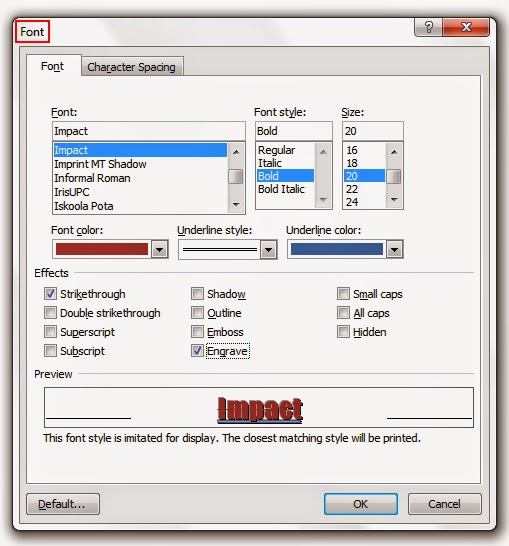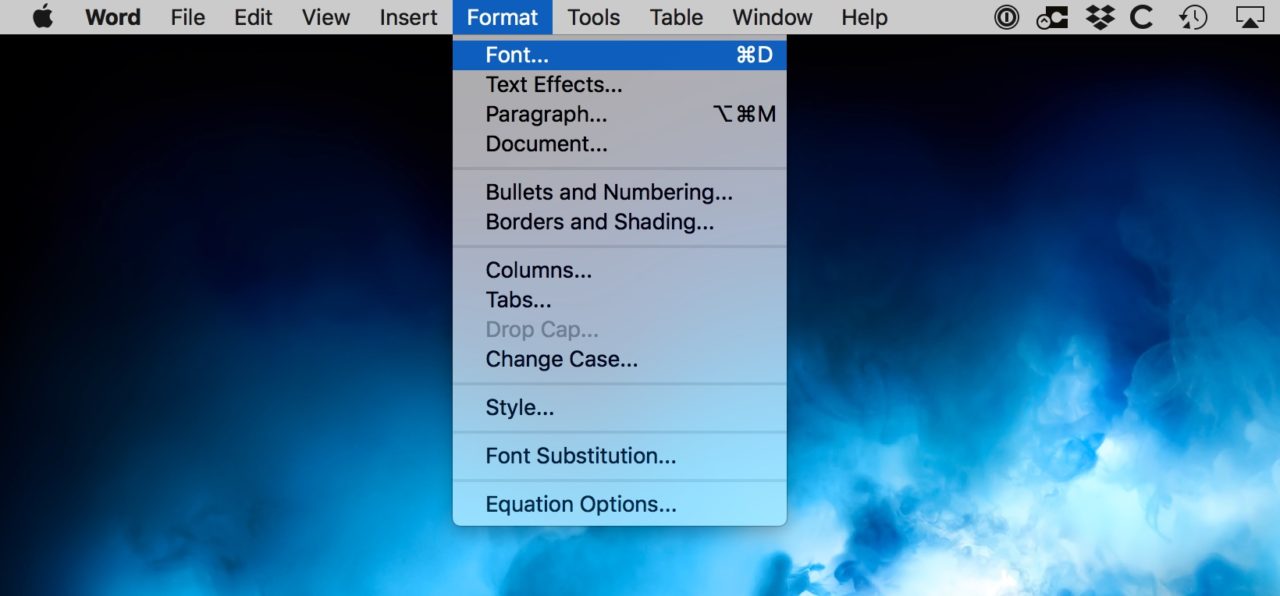

You'll see the mouse pointer change shape as it passes over different areas of the toolbar. Now hold down Alt ( ⌘ on the Mac), click σ and, keeping the left mouse button down, drag it over the Small Bar. Open the Greek characters (lowercase) paletteĬlick the symbol palette, and then release the mouse button. Use the commands in the View menu to make them visible if necessary.
#SETTING WORD FOR MAC 2011 DEFAULT FONT UPPER LOWER CASE HOW TO#
Here's how to add those symbols and expressions to the customizable toolbar:īefore we start, make sure that MathType's toolbar is visible and that the Small Bar and the Small and Large Tabbed Bars are visible. Using the Workspace Preferences command on the Preferences menu you can alter the size of the toolbar icons. If you are using the fonts we've recommended, the equation should now look like this: Your equation will be redisplayed using the new style definitions. This typically restricts your choice to the Symbol font, the Euclid Symbol font, or some other similar font.Ĭlick OK. Note that for the the Symbol style you can only assign fonts with the same encoding (arrangement of characters) as the Symbol font. Lowercase Greek letters are usually italicized, but let's experiment with this. Greek style by removing the check in the Character Style column. Finally, turn off the italic character style for the L.C.

You will find that this makes the equation look better. Let's also change the Number style so that it uses the same font as Function and Variable. Check that the italic character style is checked for Variable, but not for Function. In the Define Styles dialog box, click the arrow next to font name for Variable style, and choose the same font assigned to the Function style. Once again, choose Define from the Style menu. You can also use the scroll bar in the list to move around quickly. This automatic style assignment is the advantage you gain by using the Math style when creating equations.Ī fast way to select a font is to click the list and then type the first letter of the name. (The fraction bar is internal to MathType and does not use a style.) These styles are applied automatically as you create the equation, because you are using the Math style. (lowercase) Greek style, and the numbers in the fraction use the Number style. The letters "exp" are recognized as the abbreviation for the exponential function, and are assigned the Function style u, x, and y are treated as variables and assigned the Variable style φ and σ being lowercase Greek letters, are assigned the L.C. The equation you have just created uses the Function, Variable, L.C. The names of the eleven styles are listed in the dialog box, together with the font and character style assigned to each. Check "Use for new equations" to use the settings for new equations as well. Then press “7” and then choose an option, such as “S” for Sentence case, “l” (a lowercase L) for lowercase, “U” for UPPERCASE, “C” for Capitalize Each Word, or “t” for tOGGLE cASE.The changes you make in this dialog apply to the current equation. If you want to use your keyboard to change the case on some text, select the text and then press Alt+H to activate the Home tab. RELATED: How to Disable Automatic Capitalization Correction in Microsoft Word The selected text changes to the selected capitalization type. You can highlight the affected text and use the tOGGLE cASE option to correct the capitalization.įor our example, we’re going to make the selected text all caps, or UPPERCASE. Toggle Case may seem like a strange option, but it’s useful if you’ve been typing text without realizing the Caps Lock key is on and the autocorrect option for correcting accidental usage of Caps Lock key is not on. tOGGLE cASE: This makes the first letter of every word lowercase and the rest of the letters UPPERCASE.Capitalize Each Word: Capitalizes the first letter of every word.UPPERCASE: Makes every letter UPPERCASE.

lowercase: Makes every letter lowercase.Sentence case: Capitalizes the first letter of the first word in a sentence.The following types of capitalization are available: Select the desired type of capitalization from the drop-down menu. Then, click the “Change Case” button on the Home tab. To change the case on text in a Word document, select the text you want to change and make sure the Home tab is active. Did you type a line of text and then realize that it should have been capitalized differently? Instead of typing the line again, you can quickly and easily change the case of any text in Word without retyping it.


 0 kommentar(er)
0 kommentar(er)
